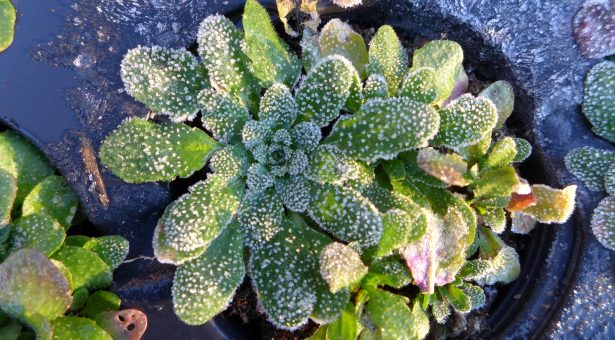What is vernalization and how do plants remember winter?

When spring arrives, with the threat of winter frosts receding, plants stir and start to sprout shoots and flowers.
To monitor the seasonal progression and to time their reproductive development, plants must be able to sense and remember environmental cues such as temperature.
The process by which plants use a prolonged cold period – winter – to promote flowering is known as vernalization.
How plants sense and remember winter is a key question worked on here by a team at the John Innes Centre, led by Professor Dame Caroline Dean.
“As a child we had a row of cherry trees in our back garden and it used to fascinate me that they all flowered pretty much at the same time” explains Dean.
“Later, I moved to California and I noticed that the seasons there were much subtler than I’d been used to back in the UK. The realisation really struck home when I went to a plant nursery to buy some tulip bulbs and the shop assistant said ‘don’t forget to put these in the fridge for six weeks before you sow them’. It reminded me of the cherry trees back home, so I went away and read about why this was necessary. When I then had the opportunity to set-up my own lab I decided to figure out how plants sense and respond to different seasonal cues; and how they use these to judge when to flower”.
To study how plants do this, the Dean lab work on a model plant species called Arabidopsis. Throughout science, researchers use model organisms which are extensively studied to understand specific biological processes, with the expectation that these discoveries can shed light on the workings of other organisms. The archetypal and widely-known model organism is the guinea-pig, thus the colloquial phrase ‘to be a guinea-pig’.
The Dean lab established that as plants experience the prolonged cold of winter they are able to switch off a floral repressor gene through a process of ‘epigenetic silencing’. Known as the FLOWERING LOCUS C (FLC), this gene acts like a brake to flowering and is silenced during the cold to enable flowering in the spring.
Through collaboration with colleagues in Professor Martin Howard’s lab (experts in computational modelling), they established that this silencing occurs gradually to progressively accelerate flowering time, but reflects a switch at the individual gene level with an increasing proportion of genes switched to OFF as winter progresses.
In laboratory experiments vernalization occurs at constant temperatures in growth rooms set to between 0 and around 15 °C. But real winter temperatures are not constant, and daily fluctuations outside during day and night often exceed the difference in seasonal average temperatures.
Experiments to date indicate that plants are able to extract a reliable signal from such “noisy” and variable temperature profiles. But how they integrate these signals over timescales of many weeks to judge the passing of winter was not clear until recently when the group undertook a study involving field experiments in the UK and Sweden, which uncovered how distinct aspects of temperature influence multiple factors that contribute to vernalization.
Meanwhile, a separate study on vernalization in wheat, led by Dr Laura Dixon in collaboration with colleagues in Hungary and France found that vernalization is influenced by warm conditions as well as cold, and a much wider temperature range than previously thought.
That study began as an exploration into how variance in ambient temperatures might influence flowering regulation in winter wheat. But it unexpectedly uncovered an “extreme vernalization response”.
Dr Dixon explained, “We have shown that vernalization responds to warmer conditions than those classically associated with vernalizing. Before this study we thought vernalization only happened up to a maximum of about 12°C, but the true temperature is much higher. This information is immediately useful to breeders”.
The ongoing climate change is expected to result not only in general warming but also in increased temperature fluctuations, both of which could have dramatic effects on vernalization efficiency in plants. These challenges, particularly for crop production, highlight the importance of further understanding the regulation of vernalization in plants.



